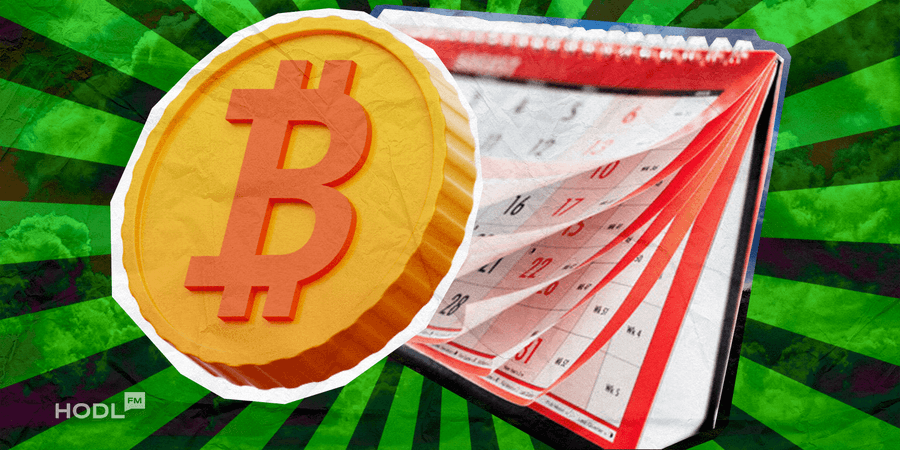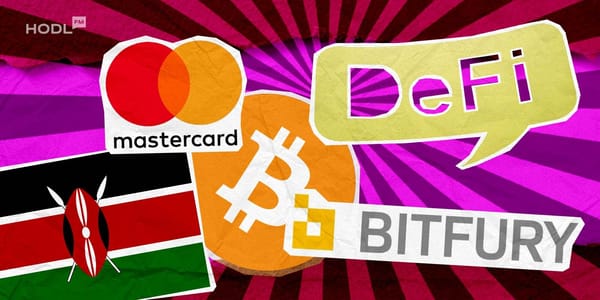The crypto market never stands still, and there’s always something new to keep an eye on. Here’s a quick roundup of what’s been happening this week, the trends, the movements, and the stories shaping the space right now.
Top gainers and losers

1. Zcash (ZEC) - saw a 30.27% increase this week, reaching $271.57
2. Virtual Protocols (VIRTUAL) - increased by 24.88%, to $0.9256
3. Pump.fun (PUMP) - with a 21.46% small gain, reached a price of $0.0041

1. Story (IP) - lost 9.36% this week to a price of $5.31
2. PAX Gold (PAXG) - 5.79% loss after a week, with a total price of $4,084
3. Tether Gold (XAUt) - 5.18% drop after a few days, with an end price of $4,087.8
Galaxy Digital Q3 earnings surge as trading and institutional interest strengthen
Galaxy Digital reported impressive third‑quarter 2025 results, supported by a sharp rise in trading activity and growing institutional adoption of crypto‑related financial services. The firm recorded $505 million in net income and $629 million in adjusted earnings for the quarter ending September 30, driven by record trading performance and digital asset investment gains. Total equity reached $3.2 billion, including $1.9 billion in cash and stablecoins, reflecting a strong liquidity position.
Galaxy’s Q3 2025 results are in. pic.twitter.com/6XU9edN1za
— Galaxy (@galaxyhq) October 21, 2025
Trading volumes soared 140% quarter‑over‑quarter, boosted by heavier spot and derivatives flows. The quarter featured one of the largest crypto transactions to date, a client sale of over 80,000 Bitcoin, executed as part of an estate planning strategy.
Beyond trading, Galaxy is expanding into data center infrastructure and high‑performance computing. Its Helios campus in Texas remains central to this strategy, with major growth expected from a new partnership with CoreWeave, projected to generate about $1 billion in annual revenue from AI‑driven GPU workloads. In August, Galaxy also secured a $1.4 billion loan to accelerate Helios expansion.
Following the strong report, Galaxy Digital’s share price climbed nearly 16% intraday before settling around 9% higher near $43, marking an 84% gain year to date.
The performance aligns with broader market momentum. CoinGecko data showed total crypto market value rose by $563 billion in Q3, reaching its highest level since 2021. Galaxy’s participation in a $1.65 billion Solana treasury initiative further highlights the sector’s deepening institutional engagement.
Ethereum nears Mainnet launch with final Fusaka testnet phase
Ethereum has entered the final testnet stage of its Fusaka upgrade, marking the last major step before its expected mainnet release on Dec. 3, 2025. The update introduces key efficiency improvements, including a per-transaction gas cap of roughly 16.78 million units, designed to optimize block utilization and prepare the network for future parallel execution.
Already active on the Holesky and Sepolia testnets, the new gas cap prevents a single transaction from consuming an entire block’s gas, previously capped at about 45 million units. This adjustment mitigates potential denial-of-service risks and enhances scalability by allowing more transactions to be processed in each block.
The Fusaka upgrade also raises Ethereum’s total block gas limit to 60 million units and debuts PeerDAS (Peer Data Availability Sampling). This innovative feature allows nodes to store only small, random portions of Layer-2 “blob” data instead of complete datasets, reducing hardware demands while maintaining data security and supporting higher-throughput scaling solutions.
The next phase of Fusaka testing will take place on the Hoodi testnet on Oct. 28, with mainnet activation targeted for December.
Fusaka (EIP-7825) follows earlier upgrades like Dencun (March 2024) and Pectra (May 2025), continuing Ethereum’s roadmap toward parallel transaction processing. The subsequent Glamsterdam upgrade, set to introduce EIP-7928, will fully focus on parallel execution.
According to Consensys engineer Gabriel Trintinalia, these test phases “help build confidence ahead of the mainnet fork by validating performance and fine-tuning parameters across the ecosystem.”
Google claims first verifiable quantum advantage with new molecule-mapping breakthrough
Google researchers have announced a milestone in quantum computing, revealing that their latest experiment mapped the structure of a molecule 13,000 times faster than today’s most advanced supercomputers. This marks what the company calls the first verifiable quantum advantage, a result that can be independently confirmed on any comparable quantum system.
The team used Google’s Willow Quantum Processor and a method known as quantum echoes. This technique involves sending a targeted signal to a qubit, the smallest unit of quantum information, then reversing the process to measure the returning “echo.” By analyzing these responses, the researchers were able to reconstruct detailed molecular information with unprecedented speed.
While this breakthrough highlights quantum computing’s enormous potential, it also raises cybersecurity concerns. Experts warn that future quantum systems could eventually break classical encryption, threatening the security of cryptocurrencies, banking systems, and sensitive government data.
According to Naoris Protocol founder David Carvalho, this represents “the biggest single threat to Bitcoin since its inception.” Although today’s quantum computers cannot yet break 2,048-bit encryption (current limits are around 22 bits), researchers stress the urgency of adopting post-quantum cryptography before the technology matures.
In response, the U.S. Securities and Exchange Commission (SEC) recently received a proposal for implementing quantum-resistant encryption standards by 2035, a step toward ensuring digital security in the quantum era.
Crypto adoption surges globally in 2025, led by South Asia and the United States
Global cryptocurrency adoption reached new heights in 2025, with South Asia emerging as the fastest-growing region and the United States maintaining its lead as the largest market by transaction volume, according to TRM Labs’ latest Crypto Adoption and Stablecoin Usage Report.
Between January and July 2025, crypto adoption in South Asia, driven by India and Pakistan, rose by 80% year-over-year, reaching nearly $300 billion in transaction volume. India retained its top global ranking for the third consecutive year, followed by the U.S., Pakistan, the Philippines, and Brazil.
The U.S. also experienced strong momentum, with crypto transactions surpassing $1 trillion in the first seven months of 2025, a 50% increase from the prior year. TRM Labs attributed the rise to favorable policies such as the GENIUS Act and the White House’s 180-Day Digital Assets Report, both of which helped foster regulatory clarity.
Stablecoins played a pivotal role, accounting for about 30% of all crypto transactions. By August, stablecoin activity had surged to $4 trillion, up 83% year-over-year, with Tether and Circle dominating 93% of market capitalization.
Retail participation has also expanded rapidly, with individual transactions growing 125% year-over-year, highlighting crypto’s growing utility in payments, remittances, and value preservation.
TRM Labs concluded that despite differing regulations across regions, the global trajectory remains clear: crypto is steadily integrating into the financial mainstream, led by the accelerating rise of stablecoins.

Disclaimer: All materials on this site are for informational purposes only. None of the material should be interpreted as investment advice. Please note that despite the nature of much of the material created and hosted on this website, HODL FM is not a financial reference resource, and the opinions of authors and other contributors are their own and should not be taken as financial advice. If you require advice. HODL FM strongly recommends contacting a qualified industry professional.





